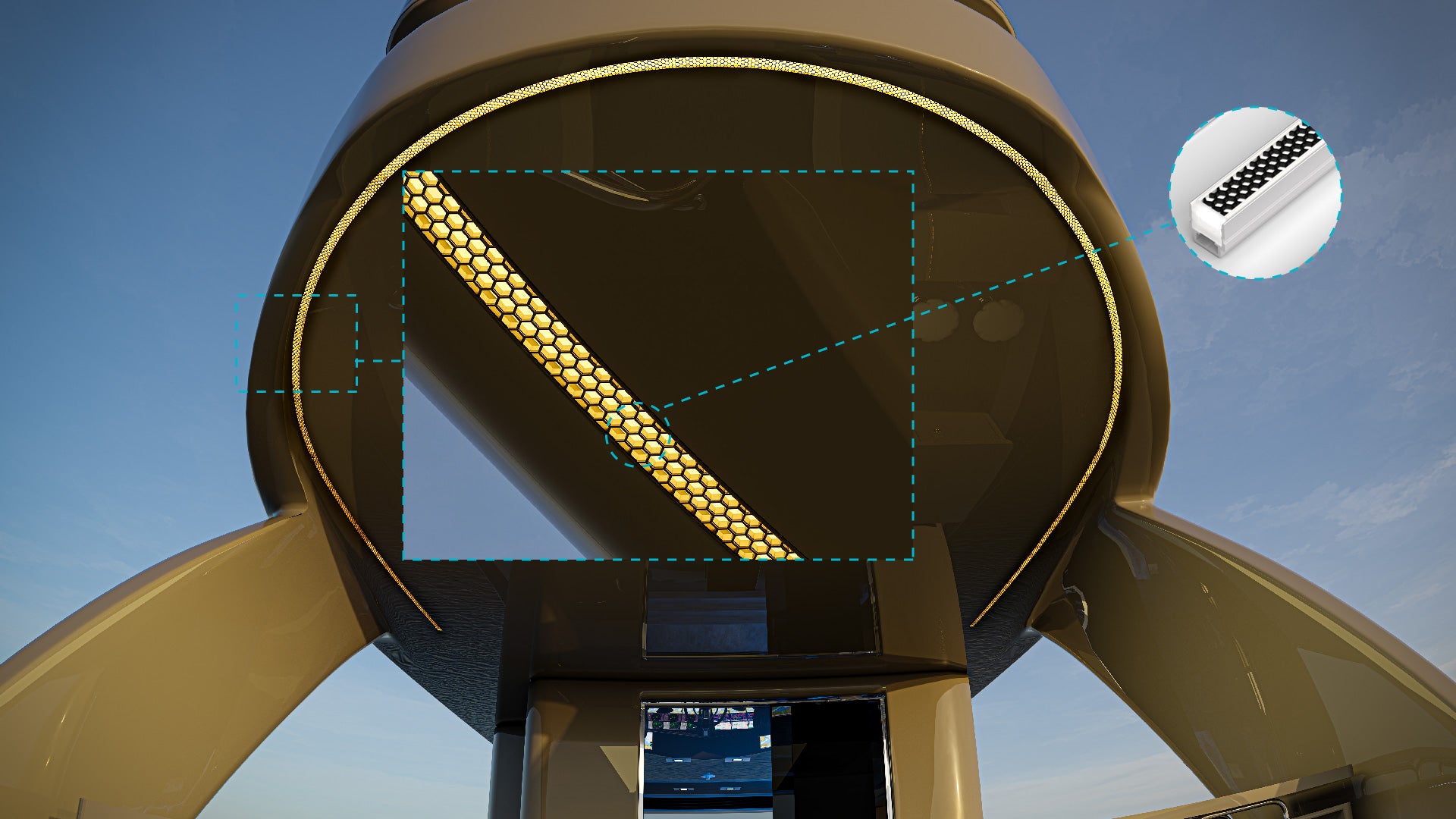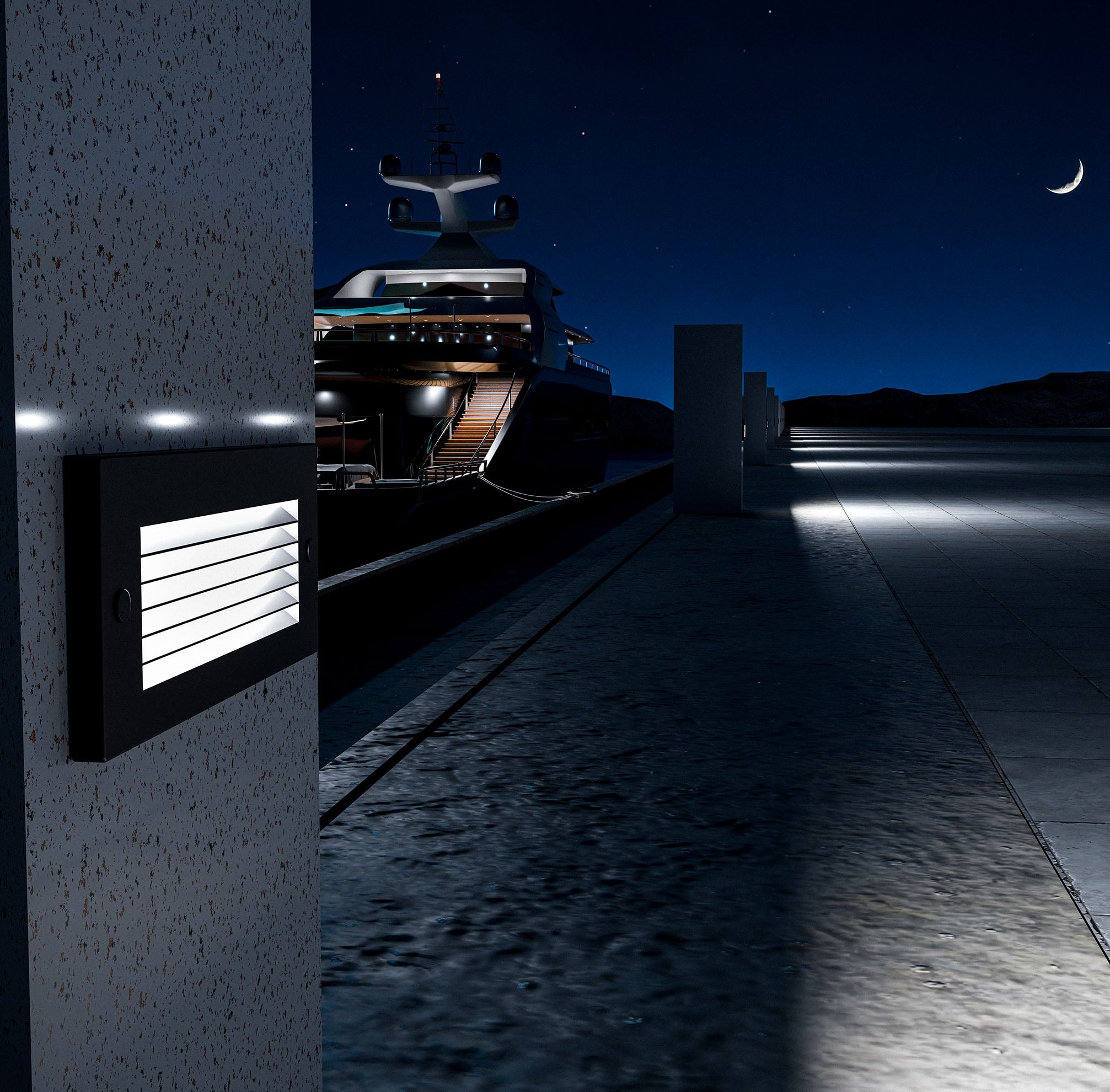Marine environments are critical to the planet's health, supporting diverse ecosystems and providing essential resources. However, these environments face numerous threats from human activities, including pollution and habitat destruction. One often overlooked aspect of environmental conservation in marine settings is the role of lighting. Proper marine lighting not only enhances safety and efficiency but also plays a significant role in protecting and preserving marine ecosystems. This blog explores how marine lighting contributes to environmental conservation and why adopting sustainable lighting solutions is crucial for our oceans.
Understanding Marine Lighting
Definition and Types of Marine Lighting
Marine lighting refers to specialized lighting systems designed for use in marine environments, including boats, docks, piers, and offshore platforms. The primary types include:
- Navigational Lights: Essential for ensuring safe passage and preventing collisions.
- Deck Lights: Provide illumination for activities on the deck of vessels.
- Underwater Lights: Enhance visibility below the waterline for recreational and safety purposes.
- Floodlights: Used for broad-area illumination, often on larger vessels and ports.
Historical Perspective: Traditional vs. Modern Marine Lighting Solutions
Traditional marine lighting relied heavily on incandescent and halogen bulbs, which are less energy-efficient and have shorter lifespans. Modern marine lighting solutions, particularly LED (Light Emitting Diode) technology, have revolutionized the industry by offering:
- Greater energy efficiency.
- Longer operational life.
- Lower heat output, reducing the risk of fire hazards.
Importance of Selecting the Right Marine Lighting for Different Applications
Choosing the appropriate lighting for specific marine applications is vital for operational efficiency and environmental protection. Factors to consider include:
- Brightness and Coverage: Ensuring adequate illumination without causing glare or excessive light pollution.
- Durability and Resistance: Selecting lights that can withstand harsh marine conditions, such as saltwater exposure and extreme temperatures.
- Energy Consumption: Opting for energy-efficient options to minimize environmental impact and reduce operational costs.
Environmental Challenges in Marine Settings
Overview of Key Environmental Issues Affecting Marine Ecosystems
Marine environments face numerous threats, including:
- Pollution: Contaminants from oil spills, plastic waste, and chemical runoff harm marine life and ecosystems.
- Habitat Destruction: Coastal development, dredging, and destructive fishing practices lead to loss of habitats.
- Climate Change: Rising sea temperatures and ocean acidification disrupt marine ecosystems and species distribution.
The Impact of Poor Lighting Choices on Marine Life and Ecosystems
Improper lighting can exacerbate these issues by:
- Disorienting Marine Species: Artificial lights can interfere with the natural behaviors of marine animals, such as navigation and mating.
- Attracting Predators: Bright lights may attract predators, increasing predation rates on vulnerable species.
- Promoting Algal Blooms: Excessive lighting can stimulate the growth of harmful algae, depleting oxygen levels and creating dead zones.
Marine LED Lighting: A Sustainable Solution
Introduction to LED Technology and Its Advantages
LED lighting has emerged as a leading solution for sustainable marine illumination. Key benefits include:
- Energy Efficiency: LEDs consume significantly less energy than traditional bulbs, reducing greenhouse gas emissions.
- Longevity and Durability: LEDs have a longer lifespan, reducing the frequency of replacements and waste.
- Lower Heat Emission: LEDs emit less heat, reducing the risk of overheating and fire hazards.
Energy Efficiency and Reduced Carbon Footprint of Marine LED Lighting
By switching to LED lighting, marine operators can significantly reduce their carbon footprint. The lower energy consumption translates to fewer fossil fuels burned for electricity generation, thus lowering greenhouse gas emissions. Additionally, the reduced need for frequent replacements means less waste and lower manufacturing emissions.
Longevity and Durability: Reducing Waste Through Longer-Lasting Lighting Solutions
LEDs are designed to last for tens of thousands of hours, far surpassing the lifespan of incandescent and halogen bulbs. This longevity not only reduces the amount of waste generated but also decreases the demand for new production, further conserving resources and minimizing environmental impact.
Minimizing Light Pollution
Definition and Effects of Light Pollution on Marine Ecosystems
Light pollution refers to the excessive or misdirected artificial light that disrupts natural darkness. In marine environments, light pollution can:
- Disrupt Biological Rhythms: Interfere with the natural day-night cycles of marine species.
- Impact Reproductive Behaviors: Affect the spawning and mating patterns of certain species.
- Alter Predator-Prey Dynamics: Change the visibility and behavior of both predators and prey, leading to ecological imbalances.
Strategies for Minimizing Light Pollution with Marine Lighting
To minimize light pollution, consider implementing the following strategies:
- Directional Lighting: Use fixtures that focus light where it is needed, reducing spillage into surrounding areas.
- Dimming Controls: Install dimmable lights to adjust brightness levels based on situational needs.
- Shielded Fixtures: Utilize fixtures with shields to prevent upward and outward light dispersion.
- Timers and Sensors: Incorporate timers and motion sensors to ensure lights are only on when necessary.
Case Studies or Examples of Successful Implementations
- Florida's Coastal Lighting Ordinances: Designed to protect sea turtle hatchlings by requiring the use of low-intensity, turtle-friendly lighting on beaches.
- Port of Los Angeles: Implemented LED lighting upgrades that resulted in significant energy savings and reduced light pollution, benefiting local marine life.
Enhancing Safety and Efficiency
The Role of Marine Lighting in Improving Safety for Vessels and Marine Operations
Proper lighting is crucial for the safety of maritime operations, ensuring visibility during night-time navigation and docking. Well-illuminated vessels and ports reduce the risk of accidents and collisions, protecting both human life and marine environments.
Enhancing Efficiency and Reducing Energy Consumption Through Optimized Lighting Solutions
Optimized lighting solutions, such as LED systems with smart controls, can enhance operational efficiency by:
- Reducing Energy Use: Lower energy consumption translates to cost savings and environmental benefits.
- Improving Visibility: High-quality lighting enhances visibility, reducing the likelihood of operational errors.
- Simplifying Maintenance: Long-lasting LED lights require less frequent maintenance, minimizing disruption to operations.
Supporting Marine Wildlife
How Appropriate Lighting Can Protect and Support Marine Wildlife
Responsible lighting practices can help protect and support marine wildlife by:
- Avoiding Disruption of Natural Behaviors: Minimizing light pollution helps maintain the natural behaviors and habitats of marine species.
- Creating Safe Habitats: Properly designed lighting can create safe environments for breeding and nesting.
Examples of Marine Species Positively Impacted by Responsible Lighting Practices
- Sea Turtles: Turtle-friendly lighting on beaches reduces disorientation of hatchlings, increasing their chances of reaching the ocean safely.
- Coral Reefs: Reducing artificial light around coral reefs can help prevent stress and promote healthier reef ecosystems.
Regulatory and Compliance Considerations
Overview of Regulations and Guidelines for Marine Lighting
- International Maritime Organization (IMO): Guidelines on marine environment protection.
- Local and National Regulations: Specific laws and standards for marine lighting in different regions.
How Adhering to These Regulations Contributes to Environmental Conservation
Complying with these regulations ensures that marine lighting practices do not harm the environment, contributing to broader conservation efforts. It also demonstrates a commitment to sustainability and responsible operations.
Tips for Ensuring Compliance in Marine Lighting Projects
- Conducting Environmental Impact Assessments: Assess potential impacts of lighting projects on marine environments.
- Choosing Certified Lighting Products: Use products that meet recognized environmental and safety standards.
- Engaging with Environmental Experts: Consult with marine biologists and environmental experts during project planning.
Marine lighting plays a critical role in both enhancing marine operations and conserving our precious marine ecosystems. By adopting sustainable lighting solutions, such as energy-efficient LED technology, we can significantly reduce our environmental footprint. Properly implemented marine lighting minimizes light pollution, supports marine wildlife, and adheres to essential regulations, thereby contributing to broader environmental conservation efforts.
The transition to sustainable marine lighting not only benefits the environment but also offers practical advantages such as improved safety, efficiency, and cost savings. It is imperative for all stakeholders in the marine industry to recognize the importance of responsible lighting practices and take proactive steps toward implementing them.
K2 Lighting is committed to providing eco-friendly marine lighting solutions that help protect our oceans while meeting the highest standards of performance and reliability. We invite you to explore our range of sustainable lighting products and join us in our mission to safeguard marine environments for future generations.
For more information on our sustainable marine lighting solutions and to discover how we can help you reduce your carbon footprint, visit K2 Lighting today. Together, we can illuminate a brighter, more sustainable future for our oceans.





